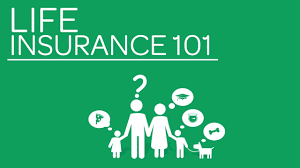Increased product awareness and sustained economic expansion are fuelling double-digit growth in the Philippines’ insurance sector, as the emergence of micro-insurance products helps boost penetration rates and premiums. The industry posted a record performance in 2015, as total premium income rose by 18.2% to reach P233bn ($4.9bn), according to the sector regulator, the Insurance Commission (IC).
Commissioner of the IC, reported that the life insurance segment posted the strongest growth, with premium income rising by 18.8% to P188.5bn ($3.96bn) for the year. The non-life component, meanwhile, which typically posts annual growth of between 5% and 10%, increased to P37.3bn ($783.1m), a 16.2% year-on-year jump.
Strong growth is expected to continue this year - predicting that life and non-life premium income could rise by as much as 28% in 2016, to around P300bn ($6.3bn).

But despite solid expansion in premium revenue and the Philippines’ status as one of the most liberalised ASEAN markets, overall penetration rates remain low.
Premiums in the Philippines as a share of GDP stood at around
1.7% in 2014, compared to 2.9% in Indonesia, 5.2% in Thailand and 7.6% in Singapore, according to research from Germany-based insurer Allianz.
A sizeable portion of that growth – in terms of both policyholders and, to a lesser extent, premiums – is expected to come from the micro-insurance segment, a form of low-cost insurance that offers premiums equivalent to a small portion of the daily minimum wage.
As of the end of 2015, some 30m of the 38m Filipinos covered by insurance carried some form of micro-insurance, the IC reported.
The regulator expects micro-insurance uptake to rise to 50m in the next two to three years, to cover roughly half the population. If achieved, this would mark a more than 15-fold increase over the 3.1m policyholders registered in 2009, the year in which the segment became fully regulated.
While low-cost micro-insurance products account for more than 75% of all policies issued, they represent only a fraction of combined premium revenues, at just 3% of the industry total.
According to current regulations, premiums for micro-insurance products cannot exceed 7.5% of the daily non-agricultural minimum wage – a policy aimed at encouraging uptake of insurance coverage among low-income earners.

However, increased awareness of coverage benefits and the broader range of products authorised by the IC are expected to boost the micro-insurance segment’s premium share to 5% or more by 2018.
The range of products approved by the IC has steadily increased in recent years, with nearly 170 options ratified by the regulator as of early 2014.
Life and non-life policies account for the majority of products sold, though the IC announced early this year that micro-agriculture, micro-health and micro-pre-need products, such as education and pension insurance, would soon be available on the market.
At the end of January revised micro-insurance regulations were unveiled, clarifying the roles and responsibilities of agents and brokers; setting out rules for distribution channels; and establishing guidelines for product-bundling and risk-sharing between local and foreign insurers.

While mutual benefit associations (MBAs) and cooperatives have traditionally dominated the micro-insurance industry in the Philippines, larger, more established, private insurers have been increasingly eyeing the segment.
“In the past, traditional insurers saw the poor as beyond the reach of insurance. With micro-insurance, they realised that the only thing necessary for [low-income] people to buy insurance is to make insurance affordable and accessible.
The IC recently announced that several foreign insurers were planning to establish operations in the Philippines, with a handful of operators from Japan, Taiwan and Europe reportedly showing a strong interest in the market.
Mainstream insurers could gain access to smaller, rural markets through link-ups with existing micro-financial services providers, such as MBAs. This scheme has already proved successful with the expansion of micro-banks into previously unserved municipal districts, particularly in rural areas.

According to the IC, local partnerships or acquisitions could offer an avenue for market entry.
There are still a number of companies that have not renewed their licences yet, so that could be an indication someone is coming. This could also help encourage local policywriters to expand into the micro-insurance segment as a means of broadening their base and establishing strong market share in anticipation of increased foreign competition.